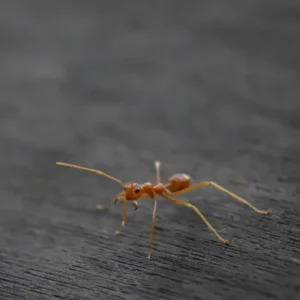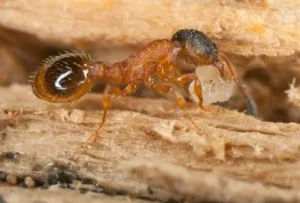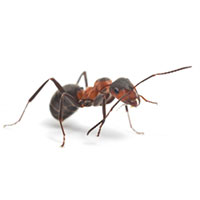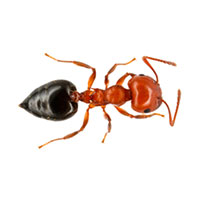Carpenter Ants in Wisconsin
Carpenter ants are wood-destroying insects that are often confused with termites. Found throughout Wisconsin, carpenter ants tunnel out support beams, making their way through entire buildings. Because they tunnel out wood, excavations can sometimes cause entire walls to collapse. The difference between carpenter ants and termites is that carpenter ants do not eat wood. They simply tunnel and nest through the wood, excavating cavities to raise their young. Signs of these excavations can signal an infestation.
Carpenter Ant Habitat
Outdoors, carpenter ants prefer damp wood. They nest in rotting tree stumps, firewood, and wood fencing. Indoors, carpenter ants infest building materials such as wood or foam insulation. They can occupy cavities like those found in hollow doors, as well as, window frames. Although most often found outdoors, carpenter ants can infest homes and buildings. They enter through cracks in foundations, or even by climbing through plumbing or electrical openings into the home.
Carpenter Ant Behaviors, Threats, or Dangers
Carpenter ants rarely bite and are not thought of as dangerous. These wood-destroying pests damage and weaken the structural integrity of homes and structures. Populations can reach large numbers and over time, satellite nests will begin to form and branch out from the original colony. Similar to termites, carpenter ants swarm in order to mate and establish new colonies. Seeing winged, flying ants in your home is a sign of an infestation. If you’re dealing with a carpenter ant problem, contact your local ant control experts.
Need help with Carpenter Ants?
We'll call you! Leave your information below.
Pests Belong Outside!
Leave your information below and we will give you a call back.
"*" indicates required fields
*During normal business hours. After hours inquiries will be returned the next business day.






